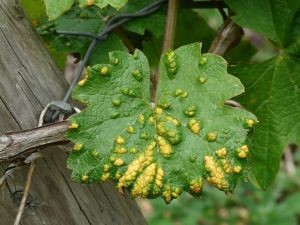
In their environment, plants are susceptible to diseases caused by microorganisms and pests. This also presents a major threat to food security and has a tremendous environmental impact. This often has serious economic losses to crops each year and can also wipe out entire species of plants, forcing conservation efforts and breeding practices that promote resistance to these diseases. To survive this, they develop a mechanism to fight the diseases either through innate or acquired resistance involving their immune system. Additionally, cutting-edge technologies allow us to investigate the biological process in a higher dimension, including high-throughput sequencing, Single-cell technologies, CRISPR/Cas9 genome editing, and deep learning.
In this collection, BMC Plant Biology presents research that taps into the understanding of disease resistance in plants and builds towards building this resistance towards sustainable breeding and crop production. Valuable insights, strategies, datasets, and reviews are offered.
The collection comprises research on the following broad areas of research:
- Elucidating plant-pathogen interactions through genomics, proteomics, high-throughput sequencing for resistance, virulence genes in crops, and pathogens.
- Evolution and mechanisms of plant disease resistance
- Evolution and regulation of R genes, their mode of action, and how R genes initiate immune signaling.
- Crop protection
- Use of chemicals and other crop management practices.
- Disease resistance and conservation
- Disease resistance and sustainability
- Genetic modification of crops to improve disease resistance
- Genetic-engineered disease resistance in crops
- CRISPR-Cas gene editing in crops
- Genetic modifications via RNA interference (RNAi)
- Resistance gene enrichment sequencing (RenSeq)
- Breeding for disease resistance
- Conventional and molecular approaches to breeding for resistance in crops
- Cell and molecular biology of disease resistance
- Plant immune systems and immune mechanisms
- Innate and acquired immune systems
- Morphological features, molecular architectures, and mechanisms governing hypersensitive response (HR) cell death in crops.
- Immune surveillance systems in crops
- Plant resistance signaling
- Immune-pathways, structure, function and role in various signaling genes and recognition patterns for resistance in crops
- Expression and regulatory mechanisms
- Resistance genes and elicitors of plant immunity
- Technological and methodological advances in plant disease resistance research
Image credit: Yue Jin
Moving towards sustainable societies has led to the research community seeking innovative ways to grow and maintain the environment around us, paving the way for a secure future. Within the plant sciences, this has accelerated research on understanding plant disease resistance to ensure sustainable plant and crop breeding towards both conservation and food security. In recognition of this fast-paced area of research, the Editors of BMC Plant Biology published this collection on Plant disease resistance comprising research supporting the UN's SDGs on Zero hunger, Climate action, sustainable cities and communities, and protecting Life on land.